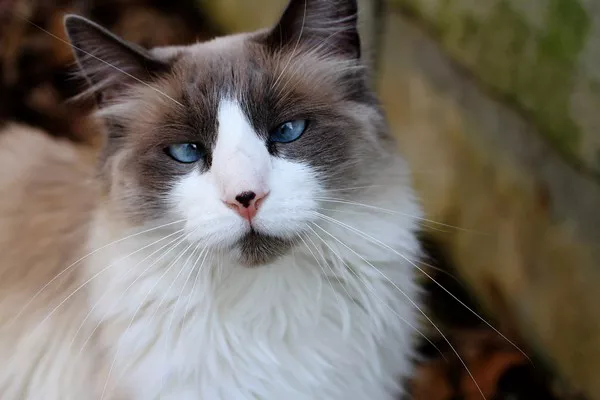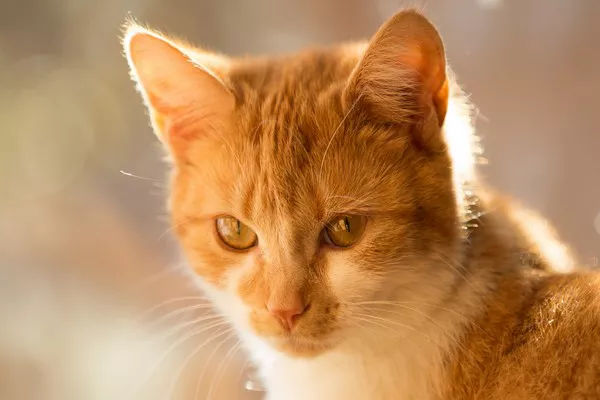Cats are beloved companions known for their independent nature, playful antics, and affectionate behaviors. However, as a cat owner, it’s essential to understand that these furry friends can be prone to a variety of health problems. Recognizing the signs and symptoms of these issues can lead to early detection and treatment, ensuring your feline friend lives a long, healthy life. This essay aims to explore the most common health problems affecting cats, including their causes, symptoms, diagnosis, treatment options, and preventive measures. By being informed, cat owners can provide the best possible care for their pets.
Obesity
Overview
Obesity is one of the most prevalent health issues in domestic cats. It is defined as an excess of body fat that can lead to various health problems, including diabetes, arthritis, and cardiovascular disease.
Causes
Overfeeding: Cats often overeat when provided with unlimited access to food.
Lack of Exercise: Indoor cats may not get enough physical activity, leading to weight gain.
Genetics: Some breeds are more prone to obesity than others.
Age: Older cats tend to be less active, increasing their risk of weight gain.
Symptoms
- Noticeable weight gain
- Difficulty in grooming
- Lethargy
- Decreased activity levels
- Difficulty breathing
Diagnosis
Veterinarians diagnose obesity through a physical examination and by calculating the cat’s body condition score (BCS). A BCS of 5 is ideal, while scores of 6 or higher indicate overweight or obesity.
Treatment
Dietary Changes: Switching to a weight management diet can help.
Portion Control: Feeding smaller, measured portions can prevent overeating.
Increased Activity: Engaging your cat in play and providing toys can encourage exercise.
Prevention
- Regularly monitor your cat’s weight.
- Provide a balanced diet tailored to their age and activity level.
- Encourage physical activity through interactive play.
Dental Disease
Overview
Dental disease is a common yet often overlooked health issue in cats. It encompasses a range of conditions, including periodontal disease, gingivitis, and tooth resorption.
Causes
Plaque Buildup: Poor dental hygiene leads to plaque accumulation, which can harden into tartar.
Genetics: Some breeds are more susceptible to dental problems.
Diet: Soft diets may not provide enough abrasion to keep teeth clean.
Symptoms
- Bad breath (halitosis)
- Red or swollen gums
- Difficulty eating
- Excessive drooling
- Loose or missing teeth
Diagnosis
Veterinarians perform oral examinations and may recommend dental X-rays to assess the extent of dental disease.
Treatment
Professional Cleaning: Regular dental cleanings under anesthesia are necessary.
Tooth Extractions: Severely affected teeth may need to be removed.
Home Care: Brushing your cat’s teeth and providing dental treats can help maintain oral health.
Prevention
- Schedule regular dental check-ups.
- Provide dental-friendly diets and treats.
- Brush your cat’s teeth regularly.
Feline Lower Urinary Tract Disease (FLUTD)
Overview
FLUTD is a term that encompasses various conditions affecting the bladder and urethra in cats. It can lead to painful urination, blood in the urine, and, in severe cases, urinary blockages.
Causes
Urinary Crystals: Mineral crystals can form in the urine, leading to blockages.
Infections: Bacterial infections can irritate the urinary tract.
Stress: Stressful environments can contribute to FLUTD.
Symptoms
- Frequent urination
- Straining to urinate
- Blood in urine
- Licking the genital area
- Vocalizing while urinating
Diagnosis
Veterinarians conduct urinalysis, blood tests, and imaging studies (like X-rays or ultrasounds) to diagnose FLUTD.
Treatment
Medications: Antibiotics for infections and anti-inflammatory drugs for pain.
Dietary Changes: Special diets can help dissolve crystals and prevent their formation.
Surgery: In severe cases, surgical intervention may be necessary to remove blockages.
Prevention
- Ensure adequate hydration by providing fresh water and wet food.
- Reduce stress through environmental enrichment.
- Regular veterinary check-ups to monitor urinary health.
Hyperthyroidism
Overview
Hyperthyroidism is a common endocrine disorder in older cats, characterized by an overproduction of thyroid hormone, leading to increased metabolism.
Causes
Thyroid Tumors: Benign tumors on the thyroid gland are the most common cause.
Environmental Factors: Some studies suggest that exposure to certain chemicals may increase risk.
Symptoms
- Increased appetite
- Weight loss despite eating well
- Increased thirst and urination
- Hyperactivity
- Vomiting and diarrhea
Diagnosis
Veterinarians diagnose hyperthyroidism through blood tests measuring thyroid hormone levels (T4).
Treatment
Medications: Antithyroid drugs can help manage hormone levels.
Radioactive Iodine Therapy: A definitive treatment that destroys overactive thyroid tissue.
Surgery: Removal of the thyroid gland may be necessary in some cases.
Prevention
While hyperthyroidism cannot be prevented, regular veterinary check-ups can help with early detection.
Kidney Disease
Overview
Chronic kidney disease (CKD) is a common condition in older cats, characterized by a gradual loss of kidney function over time.
Causes
Age: Older cats are at higher risk.
Genetics: Certain breeds are predisposed to kidney issues.
Diet: Poor diet and dehydration can contribute to kidney problems.
Symptoms
- Increased thirst and urination
- Weight loss
- Poor appetite
- Vomiting
- Lethargy
Diagnosis
Veterinarians diagnose CKD through blood tests (measuring creatinine and blood urea nitrogen) and urinalysis.
Treatment
Dietary Management: Special diets low in protein and phosphorus can help manage CKD.
Fluid Therapy: Subcutaneous fluids may be necessary to maintain hydration.
Medications: Various medications can help manage symptoms and complications.
Prevention
- Regular veterinary check-ups to monitor kidney function.
- Provide fresh water and a balanced diet.
- Encourage hydration by offering wet food.
Diabetes Mellitus
Overview
Diabetes mellitus is a metabolic disorder characterized by high blood sugar levels due to insufficient insulin production or insulin resistance.
Causes
Obesity: Overweight cats are at a higher risk of developing diabetes.
Genetics: Some breeds are more prone to diabetes.
Age: Older cats are more susceptible to the condition.
Symptoms
- Increased thirst and urination
- Increased appetite
- Weight loss
- Lethargy
- Poor coat condition
Diagnosis
Veterinarians diagnose diabetes through blood tests measuring glucose levels and urinalysis.
Treatment
Insulin Therapy: Most diabetic cats require insulin injections.
Dietary Changes: High-protein, low-carbohydrate diets can help manage blood sugar levels.
Regular Monitoring: Regular blood glucose monitoring is essential for managing diabetes.
Prevention
- Maintain a healthy weight through diet and exercise.
- Regular veterinary check-ups to monitor blood sugar levels.
Skin Conditions
Overview
Skin conditions in cats can manifest in various ways, including itching, redness, and hair loss. Common skin issues include allergies, parasites, and infections.
Causes
Allergies: Cats can be allergic to food, fleas, or environmental factors (like pollen).
Parasites: Fleas, mites, and ticks can cause skin irritation and infections.
Infections: Bacterial or fungal infections can lead to skin problems.
Symptoms
- Itching and scratching
- Red or inflamed skin
- Hair loss
- Scabs or sores
- Changes in grooming behavior
Diagnosis
Veterinarians may perform skin scrapings, allergy tests, or biopsies to diagnose skin conditions.
Treatment
Medications: Antihistamines, corticosteroids, or antibiotics may be prescribed.
Parasite Control: Flea treatments and preventive medications can help manage infestations.
Dietary Changes: Hypoallergenic diets can help manage food allergies.
Prevention
- Regular grooming to monitor skin health.
- Flea prevention measures and a balanced diet.
- Minimizing exposure to known allergens.
Heart Disease
Overview
Heart disease, particularly hypertrophic cardiomyopathy (HCM), is a common condition in cats, especially in certain breeds like Maine Coons and Ragdolls.
Causes
Genetics: Some breeds are genetically predisposed to heart disease.
Hypertension: High blood pressure can contribute to heart problems.
Hyperthyroidism: Uncontrolled hyperthyroidism can lead to heart disease.
Symptoms
- Lethargy
- Difficulty breathing
- Coughing
- Sudden collapse
- Decreased appetite
Diagnosis
Veterinarians may use echocardiograms, X-rays, and blood tests to diagnose heart disease.
Treatment
Medications: Diuretics, beta-blockers, and ACE inhibitors may be prescribed.
Dietary Management: Special diets may be recommended for heart health.
Prevention
While some heart diseases are genetic, regular veterinary check-ups can help with early detection and management.
Arthritis
Overview
Arthritis, or osteoarthritis, is a degenerative joint disease that affects many older cats, leading to pain and reduced mobility.
Causes
Age: Older cats are more likely to develop arthritis.
Obesity: Excess weight puts additional stress on joints.
Injury: Previous injuries can lead to joint problems later in life.
Symptoms
- Difficulty jumping or climbing
- Stiffness, especially after rest
- Decreased activity or playfulness
- Changes in grooming behavior
Diagnosis
Veterinarians may conduct physical examinations and X-rays to diagnose arthritis.
Treatment
Medications: Pain relief and anti-inflammatory medications can help manage symptoms.
Weight Management: Maintaining a healthy weight can reduce joint stress.
Physical Therapy: Rehabilitation exercises may improve mobility.
Prevention
- Regular exercise to maintain joint health.
- Weight management and providing joint supplements.
Cancer
Overview
Cancer is a leading cause of death in older cats and can manifest in various forms, including lymphoma, mast cell tumors, and squamous cell carcinoma.
Causes
Age: Older cats are at higher risk for developing cancer.
Genetics: Certain breeds may have a higher predisposition to specific cancers.
Environmental Factors: Exposure to certain chemicals or toxins may increase cancer risk.
Symptoms
- Unexplained weight loss
- Changes in appetite
- Lumps or bumps on the skin
- Difficulty breathing or coughing
- Vomiting or diarrhea
Diagnosis
Veterinarians may use imaging studies, blood tests, and biopsies to diagnose cancer.
Treatment
Surgery: Removal of tumors may be necessary.
Chemotherapy: Some cancers respond to chemotherapy.
Palliative Care: Managing symptoms and improving quality of life is essential for advanced cancer cases.
Prevention
While not all cancers can be prevented, regular veterinary check-ups can help with early detection.
Conclusion
Understanding the most common health problems affecting cats is crucial for responsible pet ownership. Regular veterinary check-ups, a balanced diet, and preventive care can help detect and manage these issues early, ensuring your feline friend leads a long, healthy, and happy life. By being proactive about your cat’s health, you can provide them with the best possible care and companionship. As a cat owner, staying informed and vigilant about your cat’s health will ultimately enhance the quality of life for both you and your furry companion.
Related topic:

























